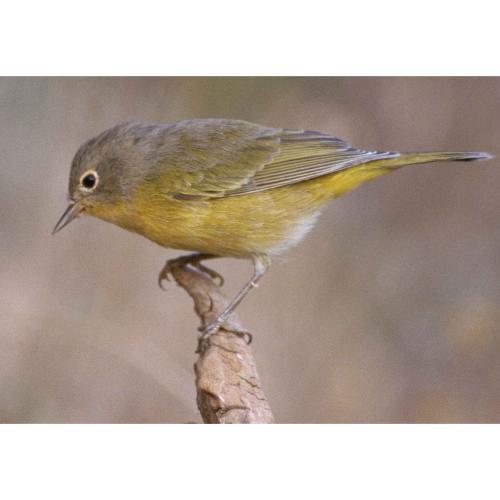©Copyright 2018 GEOSCIENCE RESEARCH INSTITUTE
11060 Campus Street • Loma Linda, California 92350 • 909-558-4548


Toews, D.P.L., Streby, H.M., Burket, L. & Taylor, S.A. (2018) A wood-warbler produced through both interspecific and intergeneric hybridization. Biology Letters, 14(11): 20180557. DOI:10.1098/rsbl.2018.0557
Summary. A male wood-warbler with unusual traits was discovered in Pennsylvania, and determined to be a product of a hybrid between a male Chestnut-sided Warbler (Setophaga pennsylvanica) and a female that was itself a hybrid between a Golden-winged Warbler (Vermivora chrysoptera) and a Blue-winged Warbler (Vermivora cyanoptera). The bird sang like a Chestnut-sided warbler, but had plumage that resembled a Vermivora warbler, and its mitochondrial DNA was from a Golden-winged Warbler. Although hybrids occur occasionally, triple hybrids such as this are quite rare. Populations of Vermivora warblers are in decline, which may reduce their discrimination in mate choice and lead to increased rates of hybridization.
Comment. Wood-warblers (Family Parulidae) comprise a family of songbirds restricted to the New World, with about 17 genera and 109 species. Hybridization between species in the same genus has been documented many times,[1] but this is an example of hybridization between species in different genera. Such events are uncommon, but several other examples are known[1]. To some extent, the frequency of inter-generic hybrids among birds may reflect taxonomic over-splitting: birds that could just as well be classified in the same genus are instead classified in separate genera. Hybridization is an indicator of probable common ancestry, and it is likely that the two genera in this example, Setophaga and Vermivora, share a common ancestor.
Several other intergeneric hybrids among wood-warblers suggest that common ancestry extends beyond the two genera in this report. Other intergeneric hybrids include: Setophaga x Seirus; Setophaga x Mniotilia; Oporornis x Geothlypis; Oporornis x Vermivora. The genera involved in these hybrids represent 51 out of the 109 species, and it seems plausible that the entire family derives from a common ancestor.
Biogeographical evidence suggests that common ancestry may extend beyond the family Parulidae. Wood-warblers belong to a group of songbirds known as “nine-primaried oscines.” Four families in this group are restricted to the New World: Parulidae (wood-warblers); Icteridae (New World blackbirds); Thraupidae (tanagers); and Cardinalidae (cardinals). If the American sparrows are recognized as a separate family, Passerellidae, they would make a fifth family restricted to the New World. Two families have Arctic distributions, and two families (buntings, Emberizidae; and finches, Fringillidae) are found in both New World and Old World. When families that seem most closely related are also geographically restricted to the same region, common ancestry should be considered. The closest family to Parulidae is the Icteridae.[2] Both families are restricted to the New World, some species seem intermediate between the two families (e.g., Yellow-breasted Chat, Icteria), and speciation from a common ancestor seems probable. The same can be said for Cardinalidae and Thraupidae. Both pairs of families group with the buntings, and it is conceivable that the ancestors of this large group spread out from the ark, with some dispersing to the New World and speciating into many locally adapted species, while other members of the ancestral group spread out through the Old World and are now classified as the buntings. Indeed, the status of the various groups has varied, with some classifications regarding them as separate families, while some have lumped them into a single family. This example, along with many others, indicates that many created kinds were able to spread out across the world after the flood and diversify into numerous locally adapted species, thus fulfilling the biblical command to “multiply on the land” and “fill the earth.”[3]
L. James Gibson, PhD
Geoscience Research Institute
[1] (Jente Ottenburghs), Avian Hybrids. https://avianhybrids.wordpress.com/parulidae/. Accessed 3 December 2018.
[2] Barker, FK, KJ Burns, J Klicka, SM Lanyon, and IJ Lovette (2015). New insights into New World biogeography: an integrated view from the phylogeny of blackbirds, cardinals, tanagers, sparrows, warblers, and allies. The Auk 132(2):333-348. https://doi.org/10.1642/AUK-14-110.1
[3] Genesis 8:17, cf Genesis 1:22. Genesis 9:1